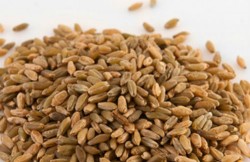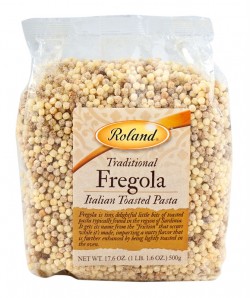by Simone Sekers
 “WHY do restaurants have to be so noisy these days?” The friend who asked this question is not normally a peevish person; she is the godmother of our daughter, and has been chosen as great-godmother by our grandchildren; we eat out with her a good deal.
“WHY do restaurants have to be so noisy these days?” The friend who asked this question is not normally a peevish person; she is the godmother of our daughter, and has been chosen as great-godmother by our grandchildren; we eat out with her a good deal.
She has introduced us to Le Comptoir Libanais, Wagamama, and a nice place opposite St Pancras station whose name escapes me. These are chains and franchises, serving an interesting range of food at all hours. There’s no such thing as lunch, or breakfast, or supper or even dinner. They are open long (and punishing) hours and if you want brunch, or high tea or low dinner, then there is always food available. The range of flavours is global, from Australia via Africa, over to America (South and North) and back to Europe, and the style is one I privately think of as Anglo-Ottolenghian.
All good then, and the grandchildren are perfectly at home with this eclectic mix. But the noise. You can rarely book, altho’ if the kind person on the other end of the phone hears an elderly quaver in your voice you will be allotted a table somewhere near the back stairs, or loo, or near the entrance.
Of course the young and cool operate apps from their mobiles and know exactly the time when all their friends are going to congregate to queue up at the latest venue. As they queue they ratchet up the noise, like starlings preparing to roost. Once seated they don’t stop, and after jamjars of cocktails they are shouting ever more loudly.
We try to order over the babble, but as menus often consist of a tapestry of little dishes many of these get forgotten; freekeh with pistachio, pomegranate and fennel, picked out because none of us knows what freekeh* actually is, never arrives and so we are none the wiser.
We shut up and eat, and once out have time to catch up on news of each other’s hip operations and, I must admit, make rather a lot of noise ourselves. Not that I want to go back to the bad old days of sepulchrally quiet restaurants where no one speaks at all, but still, this year we grumpy gourmets are going to run up a list of places where we can hear ourselves think.
 “Why does everything come with an egg?” That is what I want to know. It seems impossible to have a dish of food without an egg included. The only time I didn’t get one, recently, was with a salade niçoise, of which hard boiled egg is usually an integral part. “I’ll have the poached chicken with salsa verde please, but without the duck egg.” “Oh, OK. You could have another sort of egg,” says the obliging waiter. “Just without any egg, thank you.”. It’s not that I’m allergic to eggs, or even that I don’t like them, just that they do not go with everything. “I think it’s a sort of lazy sauce idea,.” says another friend.
“Why does everything come with an egg?” That is what I want to know. It seems impossible to have a dish of food without an egg included. The only time I didn’t get one, recently, was with a salade niçoise, of which hard boiled egg is usually an integral part. “I’ll have the poached chicken with salsa verde please, but without the duck egg.” “Oh, OK. You could have another sort of egg,” says the obliging waiter. “Just without any egg, thank you.”. It’s not that I’m allergic to eggs, or even that I don’t like them, just that they do not go with everything. “I think it’s a sort of lazy sauce idea,.” says another friend.
Once upon a time you might get a delicious béarnaise sauce with your steak, that spike of tarragon vinegar perfectly piercing the tasty flavour of grilled beef. Now you are offered steak with a free range Blue Barn hen’s egg, which isn’t the same thing at all. That gooey, rich, bland yolk needs something else with it before it meets the steak.
At a Michelin-starred pub in Devon recently I opted for the gurnard fillet in pork crackling crumb. It came with lots of other things too, most of which I’ve forgotten, plus a smoked haddock scotch egg. The egg was a quail’s and considerable dexterity had gone into making smoked haddock into a paste that satisfactorily enclosed the teeny-weeny egg. Sadly, all that effort wasn’t really worth it – the yolk had been cooked to rubber within the leathery outer and the effect was rather like eating a miniature golf ball. But offer me an old fashioned oeuf en cocotte, its top crisp, with buttery edges, the yolk beneath rich and unctuous, the whole served with a sprig of watercress and some wholemeal toast, and I’m more than happy.
“Can I please have some bread with my mackerel fillet in a spicy marinade with pickled samphire, heritage carrots and a free range hen’s egg from Bobby’s Barnyard, please?” “Oh, yes. Would you like it with rapeseed oil and apple balsamic vinegar?” “Just bread, please. To mop up the delicious juices.” That might indicate what we need the bread for. Our ingratiating smiles seem to perplex the obliging waitress. Finally, she reappears with a pile of slices of slightly stale and very cold white bread. We give up.
At other times we are offered such delicious breads (“that’s saffron, that’s hazelnut and that one there has pork scratchings in it”), warm and fragrant, and such delicious butter, from the minute we start to consult the menu, that of course we gorge ourselves on them and don’t have room to appreciate the chef’s take on smoked salmon and beetroot with a horseradish foam.
Grumpy old gourmets we might be, my friends and I, but we all agree that eating out has never been so interesting and such fun. I did find the vegetarian brunch eaten in the company of our youngest granddaughter who is at university in Bath somewhat challenging – guacamole with extra chilli served with hash browns isn’t what I want at that time of day (a double macchiato with a plain croissant does me), but she ticked me off. “You’ve got to have the bacon as well,”,she explained, and proceeded to order the same vegetarian brunch with extra bacon. That I call pragmatic.
And eating with her at The Porter on her first weekend there, she and I both had the roast butternut squash with fregola. We are now both very keen on fregola. This is another of those ballast components of modern cookery, that have replaced potatoes (unless they are chips). It is a Sardinian form of pasta, described by Anna del Conte in her latest book Pasta, as dough being rolled out until tiny grains or balls form. These are then dried in the sun. You can buy it, fairly easily, although none of our local branches of the main supermarkets stocked it so I bought it on line. It has an intriguing texture that doesn’t need huge amounts of sauce, but makes a good accompaniment to things like, well, roasted vegetables.
Another ballast component is *freekeh, as mentioned before. This is a grain I first came across in the Moro cookbook many years ago. I hadn’t actually seen it for sale anywhere until there it was, in our local Fortnums, Dikes of Stalbridge. Never underestimate the power of resourceful suppliers to get to the latest craze. Freekeh tastes nutty and makes a wonderful pilaff with those duck gesiers packed by Capreolus, enough to soothe the breast of any grumpy old gourmet.
Pictured are freekeh grains and a packet of fregola.